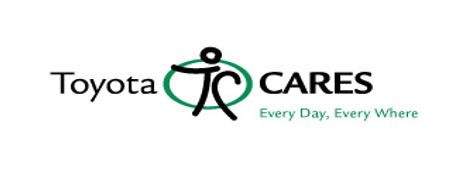Title Page
-
Project
-
Department
-
Contractor
-
Time and Date of Audit
-
Prepared by
-
Location
-
INSTRUCTIONS
1. Please answer "Yes", "No" or "N/A" on the questions below.
2. Add Photos and Notes by clicking on the Paperclip icon
3. To add a Corrective Action click on the paperclip icon then "Add Action", provide a description, assign to a member, set priority, and due date
4. Complete audit by providing digital signature on one of the applicable roles listed (TMMA/TMMI Safety, Project Leader, Contractor Representative)
5. Share your report by exporting as PDF, Word, Excel or Web Link
Ratings:
100% - 95% = Excellent
94% - 86% = Needs Improvement
Below 85% = Unacceptable
Section C - Major Violations
-
JSA/JHA Reviewed and Signed by Workers?
-
Follows Work: applicable<br><br>
-
Updated: being followed<br>
-
Hot Work Requirements Met: Issued
-
100% Tie off in use?
-
Leading Edges Identified, Protected?
-
Floor openings: Permit issued, followed?
-
Excavation over 5ft.; Sloped, Benched, and shored
-
Energy Sources: Identified, Isolated, Locked Out
-
Crane Operator Certified: Card Checked
-
Confined Space Permit, and Air Quality Tested
Section C1 JSA
-
Posted, easy access<br>
-
Required Documents on control board<br>
Section D - Environment / Site Conditions
-
First Aid Kit: stocked, eye wash, accessible
-
Sanitation: toilets clean, stocked (portables)
-
Noise: below 85dba, protection used
-
Lighting: general, task
-
Ventilation: heat, odors
-
Dust Control
Section E - Personal Protective Equipment
-
Stand: hard hat, glasses, high vis clothing, boots<br>
-
Other: correct for area, task, department<br>
Section F - Fire Protection
-
Extinguishers: present, sized for task<br>
-
Flammable liquids: controlled, stored properly<br>
-
Fuel: stored correctly (Propane, Oxygen )<br>
Section G - Signs, Barricades
-
Proper Barricades: placement <br>
-
Signs: correct, posted, phone #, red/yellow tape<br>
Section H - Materials / Handling / Storage / 5S
-
Mat, Tools, Equip: stored prop, neatly stacked
-
Trip Hazards: cords neatly run, areas clean
-
Liquids on floor: spill kit available
-
Rigging for mat handling correct, stored properly
Section I - Tools: Hand and Power
-
Condition: handles on, cord not cut<br>
-
Guarding: used, adjusted correctly<br>
-
Proper Usage: correct tool for the job<br>
-
Identification on gang boxes, tools, equipment<br>
Section J - Welding, Cutting, and Grinding
-
Hot Work Requirements Met: issued<br>
-
Proper PPE: non flammable clothing<br>
-
Shields, Barriers: equipment, area protected <br>
-
Gas Equip: proper storage, flash arrestors used<br>
Section K - Electrical
-
GFCI Protection: tested
-
Ext Cords: condition, protected, inspected
Section L - Scaffolds
-
No missing planking, bracing, guardrails<br>
-
Inspected: tagged, hazards noted<br>
-
Falling Object Protection: toe boards<br>
-
Rolling Scaffolds: wheels locked<br>
-
Workers tied off in Aerial Lifts, Prop fall pro<br>
-
Basket: floor cleaned, materials loaded properly<br>
Section M - Fall Protection
-
PFAS: inspected, good condition, worn properly<br>
-
Proper Anchorage: clamps, straps, lines<br>
-
Workers tied off in scissor lifts<br>
-
100% tie off in use (double Lanyards)<br>
-
Leading Edges: identified, protected<br>
-
Warning Lines: used, proper distance<br>
-
Floor openings: permit issued, followed<br>
-
Roof work: permitted, weather conditions<br>
Section O - Motor vehicles / Mechanized Equipment
-
Daily Inspections, equipment identified<br>
-
Safety Devices: seat belts, lights, alarm<br>
-
Operators: certified, authorized, licensed<br>
-
Forklift operated correctly<br>
Section P - Excavations
-
Over 5 ft: sloped, benched, shored<br>
-
Over 4 ft: ladder access, every 25 ft.<br>
-
Spoils: back 3ft<br>
-
Water Intrusion: rain, seepage<br>
-
Excavation Protected: equipment, workers<br>
Section Q - Concrete and Masonry Construction
-
Rebar / rods capped, protected<br>
-
Masonry walls supported, Limited access zone<br>
Section R - Steel Erection, Equipment Placement
-
Area protected from overhead lifts<br>
-
Site specific erection plan in place<br>
-
Area Will Support Equipment and Load<br>
Section T - Demolition
-
Engineer survey by Competent Person made<br>
-
All serv: shut off, capped, disc, removed<br>
Section V - Power Transmission / Distribution / LO
-
Energy Sources: identified, isolated, locked out<br>
-
Sign In/Out Sheet: used and correct<br>
-
Group LO: key box used / key inside<br>
-
Locks: labeled, contain required info.<br>
-
Arc Flash: proper PPE, workers trained<br>
Section X - Ladders
-
Secured: used properly, right type for work<br>
-
Non-Conductive: no metal side rails<br>
-
Good Condition: rungs, rails, bracing<br>
Section Z - Toxic / Hazardous Substances
-
Chemicals: identified, labeled<br>
-
Stored Properly: correct containment<br>
-
SDS Sheets: available, correct<br>
-
Proper PPE Being Used<br>
Section CC - Cranes and Derricks
-
Crane Operator Certified: card checked<br>
-
Crane Inspection: certifications current<br>
-
Rigging: condition, inspected, rating tag<br>
-
Rigger Qualified: checked<br>
-
Signal Person: Qualified, checked<br>
Section A1 - Confined Space
-
Air Quality Tested<br>
-
Permit / Checklist Posted<br>
-
Workers Trained / rescue notified<br>
Other
-
Safety Rep. on site and available <br>
Completion
-
Project Leadership Comments (Required for below 85%)
-
Project Mgr./Leader : (Name and Signature)
-
Contractor Representative : (Name and Siganture)
-
TMNA/TMMI Safety Representative: (Name and Signature)















